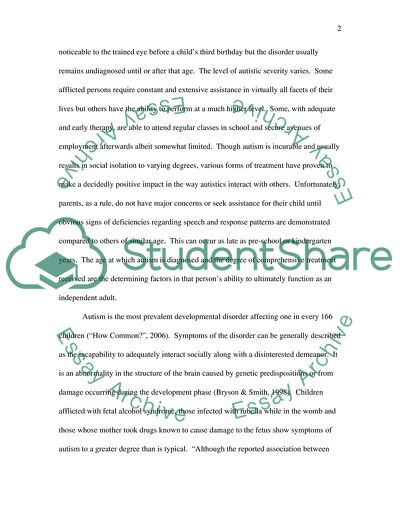Cite this document
(Autism Is Generally Noticeable Research Paper Example | Topics and Well Written Essays - 2250 words, n.d.)
Autism Is Generally Noticeable Research Paper Example | Topics and Well Written Essays - 2250 words. https://studentshare.org/health-sciences-medicine/1710728-autism-argumentative-research-paper
Autism Is Generally Noticeable Research Paper Example | Topics and Well Written Essays - 2250 words. https://studentshare.org/health-sciences-medicine/1710728-autism-argumentative-research-paper
(Autism Is Generally Noticeable Research Paper Example | Topics and Well Written Essays - 2250 Words)
Autism Is Generally Noticeable Research Paper Example | Topics and Well Written Essays - 2250 Words. https://studentshare.org/health-sciences-medicine/1710728-autism-argumentative-research-paper.
Autism Is Generally Noticeable Research Paper Example | Topics and Well Written Essays - 2250 Words. https://studentshare.org/health-sciences-medicine/1710728-autism-argumentative-research-paper.
“Autism Is Generally Noticeable Research Paper Example | Topics and Well Written Essays - 2250 Words”. https://studentshare.org/health-sciences-medicine/1710728-autism-argumentative-research-paper.


